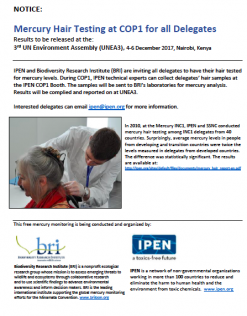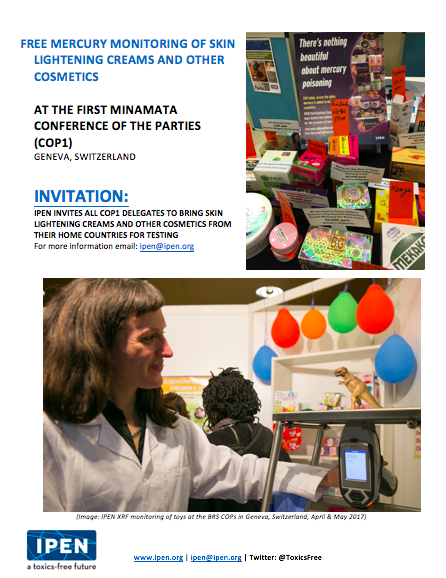Activities
27 September, 2017
IPEN Participation in Thematic Sessions
The goal of the Thematic Session on Water was to examine how measures to reduce and control emissions and releases of mercury that end up in water bodies can relieve the environment of its mercury burden and decrease human exposure to mercury. IPEN Steering Committee member and Secretary-Treasurer of the ISACI (Island Sustainability Alliance CIS Incl) Imogen Ingram; David Evers, Executive Director and Chief Scientist at BRI (Biodiversity Research Institute); and Eva Kruemmel, Senior Policy Advisor for Environment and Health of the Inuit Circumpolr Conference, were among the speakers in panel.
Imogen clarified that, "unlike the acute poisoning under ASGM, methylmercury dietary exposure for fish-eating populations is typified by frequent, lower doses over the long-term. The health impacts are therefore more difficult to assess, and may well be in different body functions than for those suffering from ASGM occupational exposure. Scientists are still trying to find reasons why health impacts in tropical climates are different to those in colder climates, and more biomonitoring in SIDS ("Small Island Developing States") will be needed to help answer those questions. Overall, the benefits arising from Omega-3 fatty acids and selenium through eating fish currently still outweigh the risks. But consumers are advised to try to eat smaller fish from species that are known to contain less methylmercury." As an important next step, Imogen recommended the production of fish advisory cards for each Pacific SIDS, based on the 10 most-consumed species, so that consumers may be better informed about which local fish contains less methylmercury.
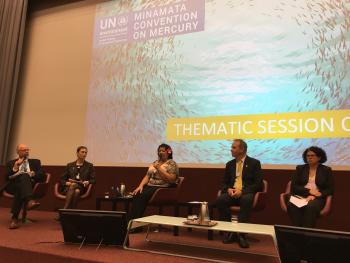
IPEN Participation in MIA Clinics
Jindrich Petrlik from ARNIKA, an IPEN Participating Organization, spoke at the Minimata Initial Assessment Clinic (MIA) at COP1 on the experiences of emerging economies with industrial sources of mercury. He recommended the oversight and monitoring of industrial mercury waste. “I suggest the use of PRTRs to carry on inventories of mercury releases, but it is important to include mercury in wastes in the PRTR. It is also important to focus more on alternatives like energy-saving programs and waste sorting and recycling, rather than choosing to build new sources of mercury release, like coal-power plants or waste incinerators."
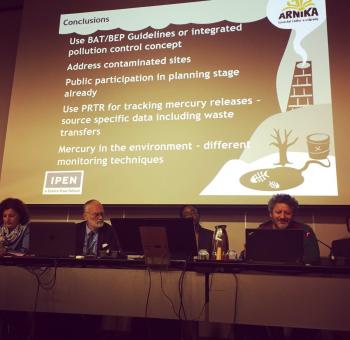
29 September, 2017
IPEN Co-Hosted a Showcase Event
IPEN teamed up with the Global Environment Facility Small Grants Programme (GEF SGP) and Zero Mercury Working Group (ZMWG) for a Showcase Event on 29 September, 2017. The Event was a launch of local-to-global coalitions on chemicals, waste and mercury and included speakers from IPEN, GEF, UNDP, ZMWG and the Basel / Rotterdam / Stockholm Conventions Secretariat. The Event served to link local-to-global actors in chemicals, waste and mercury management, and discuss collaboration opportunities to promote effective implementation of the new global mercury convention.
Find more information here

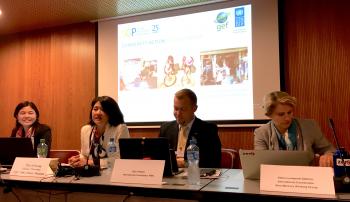
25 September, 2017
IPEN Participation in Thematic Sessions:
The objective of the Thematic Session on Land was to look at how the provisions of the Mercury Treaty will help bring about cleaner technologies for artisanal and small-scale gold mining, environmentally sound approaches to mercury waste, options for managing contaminated sites, and possibilities for moving away from the use of mercury in products and processes. IPEN Mercury Advisor Lee Bell spoke about his experience living on a contaminated site and the steps that can be taken to address remediation. He noted, “People live in, on, and around contaminated sites. We must take into account the social element of this and involve the public and the community in the process of remediation.” Lee explained that communities are a valuable resource to authorities and governing bodies because they have the experience to notate the changing nature of the site over time, and how the site has affected the life and health of inhabitants. This information is not available to experts who take seasonal risk assessments. Lee recommends a combination of community involvement and expert resources in order to find permanent and socially acceptable processes for the remediation of contaminated sites.
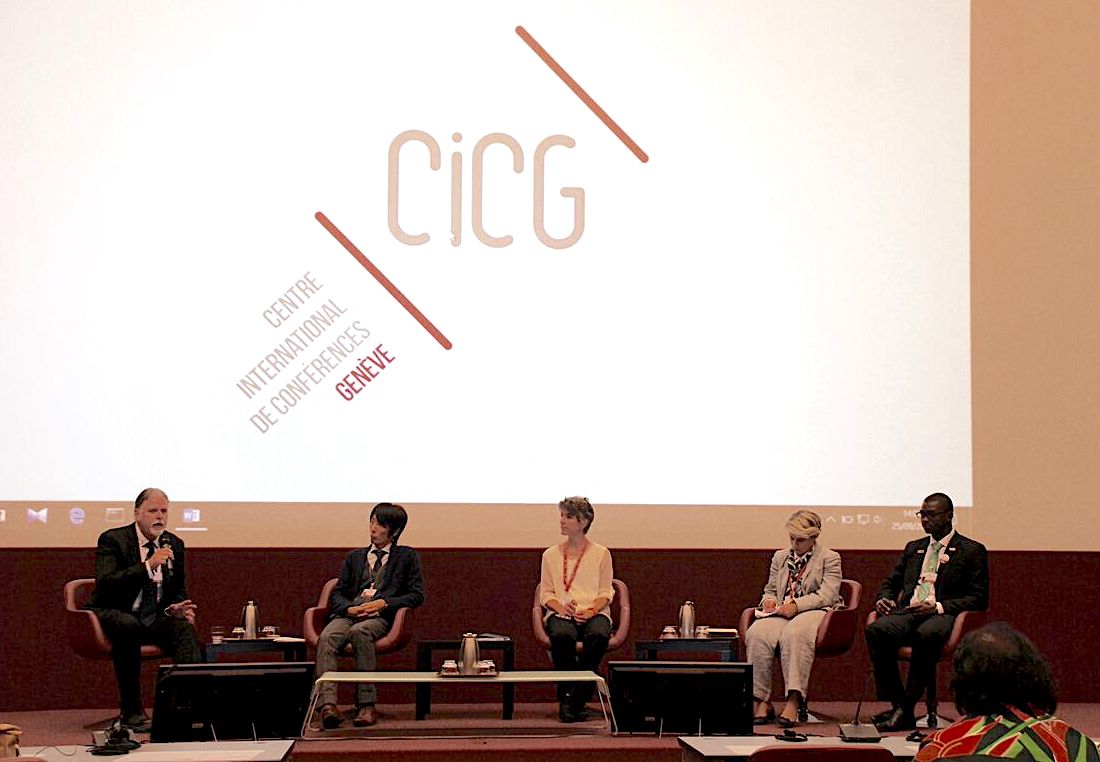
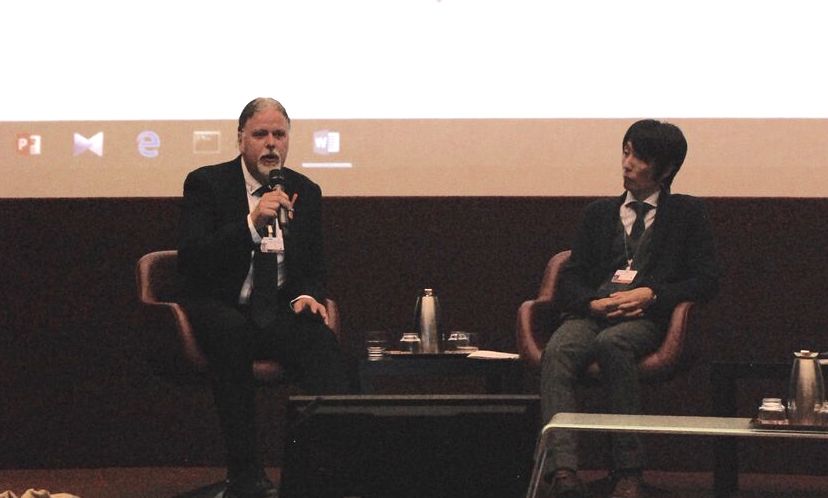
18 September, 2017
IPEN will conduct hair testing for mercury content at the COP1
IPEN has invited all COP1 delegates to come by the IPEN booth at the COP1 to get their hair tested for mercury. The samples taken during the meeting will be sent to Biodiversity Research Institute's laboratories for mercury analysis. Results will be complied and reported on at UNEA3.
This follows testing that IPEN previously carried out at the Mercury Treaty INC1 and, more recently, as research for IPEN's Mercury in Women of Childbearing Age in 25 Countries study.
.
9 September, 2017
IPEN will conduct free mercury monitoring of skin lightening creams and other cosmetics at the COP1
IPEN has invited all COP1 delegates to bring skin lightening creams and other cosmetics from their home countries for testing. “Skin lightening” and “freckle removing” skin creams that are sold around the world sometimes contain mercury. To follow up on previous testing (http://ipen.org/site/china-results and http://ipen.org/site/cosmetics-philippines), IPEN will be using an XRF analyzer to test skin creams for mercury content at the IPEN booth at the COP1. Information about mercury content in the creams will be provided to delegates immediately.
As noted in Article 4 of the Minamata Convention on Mercury:
Each Party shall not allow, by taking appropriate measures, the manufacture, import or export of mercury-added products listed in Part I of Annex A after the phase-out date specified for those products, except where an exclusion is specified in Annex A or the Party has a registered exemption pursuant to Article 6.
Cosmetics with mercury content above 1ppm, including skin lightening soaps and creams, are included in Part 1 of Annex A of the Convention.
Conference variant

